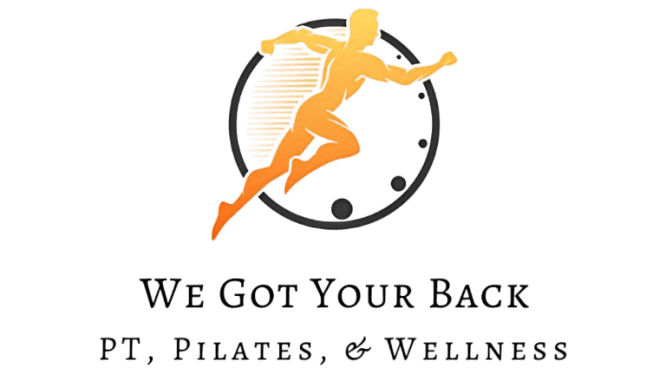For many women, conversations about bladder leaks or pelvic discomfort can feel uncomfortable or even embarrassing. Yet the reality is that incontinence is far more common than most people realize—and it is often closely tied to pelvic floor health. The good news is that by better understanding your pelvic floor and using natural strategies, you can take meaningful steps toward improved bladder control, confidence, and overall well-being.
In this blog, we’ll explore what pelvic floor health means, how it relates to incontinence, and what you can start doing today to support long-term comfort and control.
What Is Pelvic Floor Health?
Your pelvic floor is a group of muscles, ligaments, and connective tissues that form a supportive “hammock” across the bottom of the pelvis. These muscles are responsible for supporting the bladder, uterus, and bowel. When functioning properly, they provide stability, control, and coordination for daily activities.
Pelvic floor health refers to the strength, flexibility, and coordination of these muscles. Just like other muscle groups in the body, your pelvic floor can become weak, tight, or uncoordinated over time. This can lead to challenges such as incontinence, pelvic discomfort, or even difficulty returning to physical activities you once enjoyed.
Maintaining pelvic floor health is not only important for reducing leaks—it’s also key for posture, core strength, and mobility.
How Pelvic Floor Health Impacts Incontinence
When your pelvic floor muscles are weakened or not firing properly, they may not be able to provide the support your bladder needs. This can lead to stress incontinence (leaks during coughing, sneezing, or exercise) or urge incontinence (a sudden, strong need to urinate).
Life events such as pregnancy, childbirth, menopause, or even years of repetitive movement can all impact pelvic floor health. Over time, these changes may leave women feeling frustrated or less confident in daily life.
By focusing on pelvic floor health, you can retrain and re-strengthen these muscles to restore bladder control and reduce reliance on temporary fixes like pads or medications
Why Traditional Approaches Aren’t Always Enough
For many people, the first advice given for incontinence is to “just do Kegels.” While Kegel exercises can be helpful, they aren’t always the full solution. In fact, without proper guidance, Kegels may be done incorrectly—or they may not address other important factors such as muscle coordination, breathing patterns, or core stability.
Other common recommendations, such as rest or medications, might provide temporary relief but often don’t address the root issue: pelvic floor health. That’s why a more holistic and natural approach is needed to create lasting results.
Natural Strategies to Support Pelvic Floor Health
Improving pelvic floor health doesn’t have to be complicated. In fact, many strategies are simple, accessible, and can be integrated into your daily routine. Here are some of the most effective approaches:
1. Breathing and Awareness Techniques
The pelvic floor works in close connection with your diaphragm. By practicing deep, diaphragmatic breathing, you can begin to relax and coordinate your pelvic muscles more effectively. A few minutes of focused breathing each day can help improve pelvic floor awareness and reduce tension.
2. Gentle, Targeted Exercises
While Kegels can play a role, combining them with other movement-based strategies is key. Exercises such as bridges, squats, or controlled core movements—done with proper alignment and breathing—can help strengthen and support pelvic floor health.
3. Posture and Alignment
Poor posture can place extra stress on the pelvic floor. By paying attention to your alignment when sitting, standing, or lifting, you can take pressure off the bladder and encourage healthier muscle engagement.
4. Lifestyle Adjustments
Simple changes, such as staying hydrated, avoiding excessive caffeine, and incorporating movement breaks into your day, can also support bladder control. These small habits often make a big difference when paired with targeted pelvic floor health strategies.
5. Professional Guidance
Perhaps the most important step is seeking support from a licensed physical therapist who specializes in pelvic floor health. Through individualized assessment and one-on-one care, you can learn exactly how to engage the right muscles and address your unique concerns.
Common Myths About Pelvic Floor Health
Because pelvic floor health is not often talked about openly, there are many myths and misconceptions. Let’s clear up a few:
- Myth: Incontinence is just a normal part of aging.
- Fact: While common, incontinence is not inevitable. With the right support, many people regain significant bladder control and confidence.
- Myth: Kegels are the only solution.
- Fact: Kegels are one tool, but lasting results often require a more holistic approach to pelvic floor health, including breathing, movement, and posture.
- Myth: Surgery or medication are the only effective options.
- Fact: Non-invasive, movement-based strategies have been shown to make a meaningful difference for many people.
The Benefits of Focusing on Pelvic Floor Health
When you invest in your pelvic floor health, you aren’t just improving bladder control—you’re also supporting your overall quality of life. Some benefits include:
- Greater confidence in daily routines, exercise, and social activities.
- Reduced reliance on temporary fixes like pads or medications.
- Improved posture, core strength, and mobility.
- A better understanding of your body and how it functions.
- Long-term wellness that supports not just bladder control but overall stability and comfort.
How Pelvic Floor Health Connects to Whole-Body Wellness
One of the most empowering aspects of focusing on pelvic floor health is realizing how interconnected the body truly is. When your pelvic floor is strong and coordinated, it improves not only bladder control but also spinal alignment, hip function, and core strength.
This ripple effect can reduce aches, improve balance, and help you feel more confident engaging in activities like exercise, lifting, or simply enjoying time with family. By seeing pelvic floor health as part of your overall wellness, you can create long-lasting improvements that go beyond incontinence.
Taking the First Step Toward Better Pelvic Floor Health
If you’ve been living with bladder leaks or pelvic health concerns, know this: you don’t have to accept it as “normal.” There are natural, supportive strategies that can help you feel stronger, more confident, and more in control.
The most important step is to take action. The longer these issues are left unaddressed, the harder they can be to manage. By focusing on pelvic floor health now, you can create meaningful changes that improve your confidence and quality of life.
Ready to Learn More?
At We Got Your Back PT, Pilates & Wellness, we’re passionate about helping individuals take back control of their health through education, movement, and compassionate care. Our workshops and discovery visits are designed to give you practical tools, clear guidance, and personalized support.
If you’re ready to explore how pelvic floor health can improve your bladder control and overall confidence, we invite you to take the next step.
Book your Free Discovery Visit today. You’ll have the chance to sit down with a licensed physical therapist, ask questions, and learn which natural strategies are best suited for your body and goals.
Call 603-382-3336 or click here to schedule your free visit.
More Free Resources:
See what others are saying: Google Reviews
Check out our memberships: doctami.com/membership
Read our blog: Urinary Control: Effective Exercises to Support Pelvic Floor Health and Confidence – We Got Your Back PT, Pilates & Wellness

